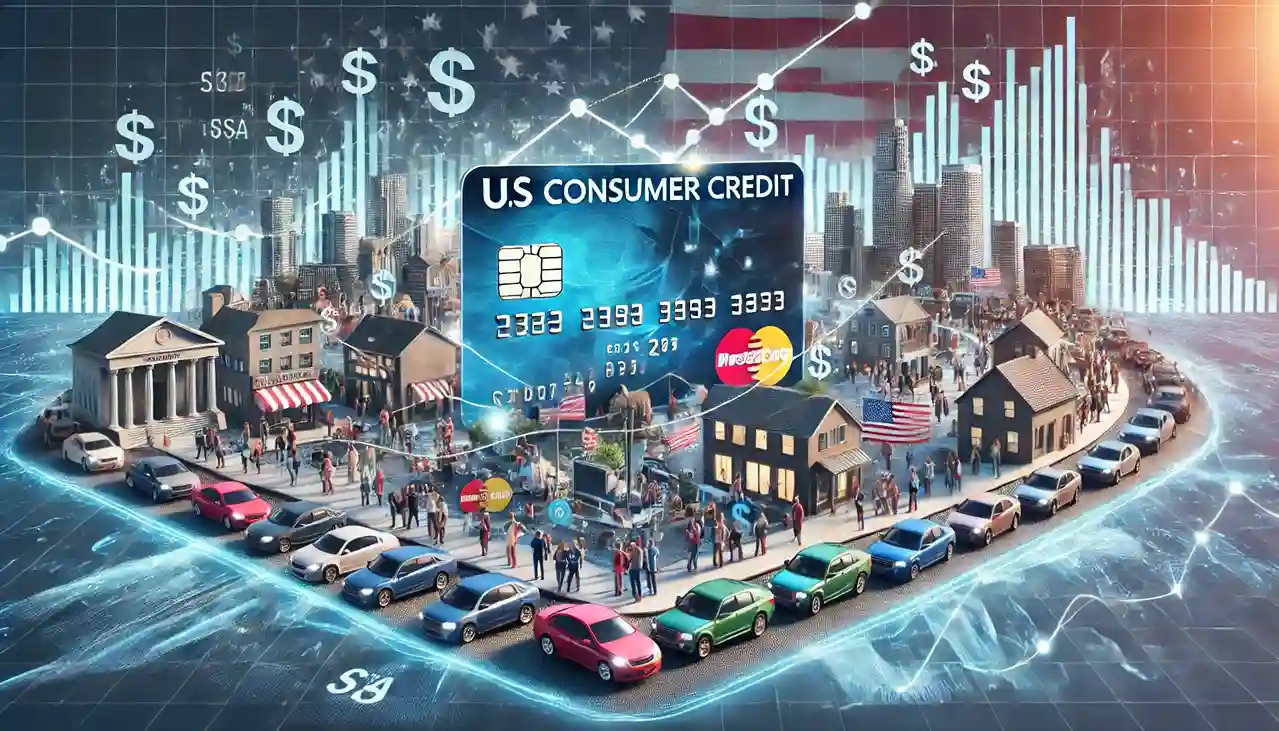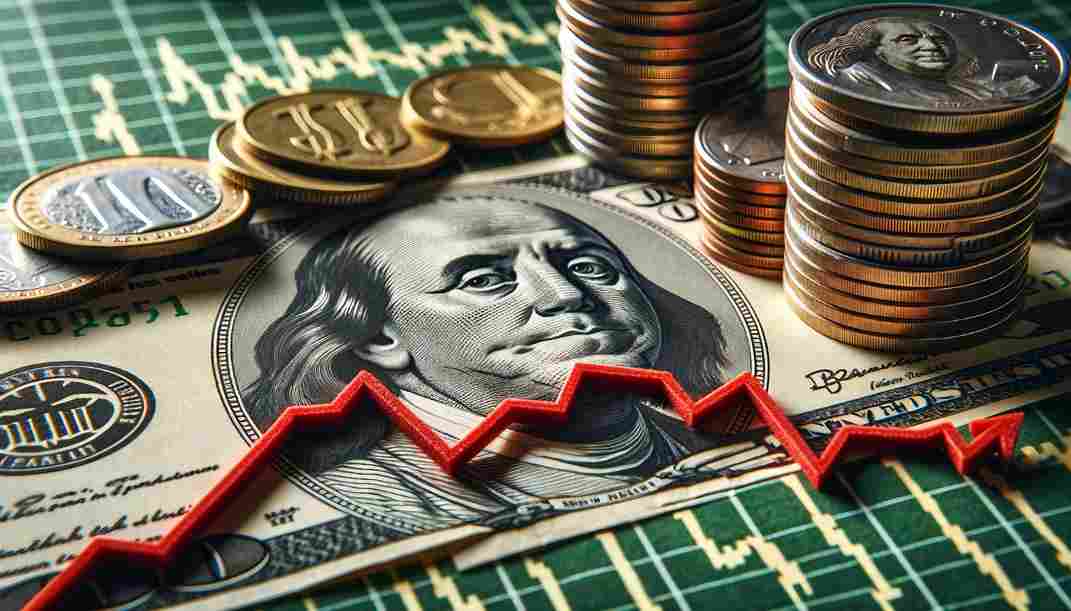Consumer credit in the US is a critical factor that forex traders must monitor closely. While it may not sound as glamorous as GDP growth or unemployment rates, the ebb and flow of consumer credit can provide significant insights into the economic health and potential currency movements. So, how does consumer credit affect forex trading? Let’s dive deep and explore the various facets of this intriguing subject.

US Consumer Credit
Understanding US consumer credit is like getting to know the pulse of the American consumer. Consumer credit represents the total amount of debt owed by individuals, encompassing everything from credit card balances to auto loans and mortgages. When consumers are borrowing more, it can signal confidence in the economy and a willingness to spend. On the flip side, a decline in consumer credit may indicate caution and potential economic slowdown.
The Types of Consumer Credit
Revolving Credit
Revolving credit, such as credit cards, allows consumers to borrow up to a certain limit and repay either in full or through minimum monthly payments. The flexibility of revolving credit makes it a popular choice, but it can also lead to significant debt if not managed wisely.
Non-Revolving Credit
Non-revolving credit includes loans for specific purposes, such as auto loans, student loans, and mortgages. Unlike revolving credit, these loans have fixed repayment schedules and terms. They reflect long-term financial commitments and stability, which can influence broader economic indicators.
How Consumer Credit Data is Collected
The Federal Reserve releases a monthly report on consumer credit, providing detailed statistics that traders use to gauge economic conditions. This data includes the total amount of outstanding consumer credit and the growth rate of both revolving and non-revolving credit. Keeping an eye on these reports can help forex traders anticipate shifts in consumer behavior and economic trends.
The Link Between Consumer Credit and Economic Health
Consumer Spending and Economic Growth
High levels of consumer credit often correlate with increased consumer spending, which drives economic growth. When people feel confident about their financial future, they are more likely to make large purchases, invest in new homes, and engage in activities that boost the economy.
Debt Levels and Financial Stability
However, high consumer credit can also lead to elevated debt levels, which might pose risks to financial stability. If consumers become over-leveraged and unable to meet their debt obligations, it can trigger a cascade of economic problems, including reduced spending, higher default rates, and financial crises.
Impact of Consumer Credit on Forex Markets

Currency Valuation
The health of consumer credit directly impacts the value of the US dollar. When consumer credit is rising, it often signals economic strength, which can lead to a stronger dollar. Conversely, a decline in consumer credit might indicate economic troubles ahead, weakening the dollar.
Interest Rates and Monetary Policy
Consumer credit data influences the Federal Reserve’s decisions on interest rates. For instance, if consumer credit growth is too rapid, the Fed might raise interest rates to prevent overheating and inflation. Higher interest rates can attract foreign investment, strengthening the dollar. Conversely, if consumer credit is shrinking, the Fed might lower rates to stimulate borrowing and spending, which could weaken the dollar.
Analyzing Consumer Credit Trends
Short-Term Trends
Short-term trends in consumer credit can be influenced by seasonal factors, such as holiday spending, tax returns, and back-to-school shopping. Traders need to consider these fluctuations when analyzing monthly data to avoid misinterpretation.
Long-Term Trends
Long-term trends provide a clearer picture of economic health. A consistent rise in consumer credit over several months or years typically indicates robust economic growth, while a prolonged decline can signal underlying economic weaknesses.
Consumer Credit and Inflation

Inflationary Pressures
When consumer credit is high, increased spending can lead to inflationary pressures. More money circulating in the economy means higher demand for goods and services, which can drive up prices. Forex traders need to be mindful of this relationship as it affects currency valuation and purchasing power.
Central Bank Response
In response to inflationary pressures, central banks might adjust their monetary policies. For example, the Federal Reserve could increase interest rates to curb inflation, which in turn affects the forex market by making the dollar more attractive to investors seeking higher returns.
Case Studies: Historical Impact of Consumer Credit on Forex
The 2008 Financial Crisis
The 2008 financial crisis provides a stark example of how consumer credit can impact the economy and forex markets. Leading up to the crisis, excessive consumer borrowing and a housing bubble led to massive defaults and financial instability. The subsequent economic downturn weakened the US dollar significantly as confidence in the US economy plummeted.
Post-COVID Economic Recovery
In contrast, the post-COVID recovery has shown a different dynamic. With stimulus packages and low-interest rates, consumer credit has been rising, supporting economic recovery. However, the long-term impact on inflation and currency valuation remains a topic of keen interest for forex traders.
Consumer Credit in Different Economic Cycles

Expansion Phases
During economic expansions, consumer credit typically rises as people feel more confident about their financial future. This increased borrowing can support further economic growth, creating a positive feedback loop that benefits the forex market.
Recession Phases
In recessions, consumer credit often contracts as individuals and businesses become more cautious with their spending. This contraction can signal economic trouble, leading to a weaker dollar and a flight to safer currencies like the Japanese yen or Swiss franc.
Strategies for Forex Traders
Monitoring Consumer Credit Reports
Forex traders should regularly monitor consumer credit reports to stay ahead of potential market shifts. Understanding the nuances of these reports can provide valuable insights into economic trends and help traders make informed decisions.
Integrating Consumer Credit Data into Trading Models
Integrating consumer credit data into trading models can enhance predictive accuracy. By combining consumer credit trends with other economic indicators, traders can develop more robust strategies to navigate the forex market’s complexities.
Common Misconceptions About Consumer Credit
Consumer Credit Always Equals Economic Growth
A common misconception is that rising consumer credit always indicates economic growth. While it often does, it can also signal rising s that might become unsustainable, leading to economic instability.
Consumer Credit Data is Only Relevant Domestically

Another misconception is that consumer credit data is only relevant to domestic markets. In reality, global investors and forex traders closely watch US consumer credit trends as they can impact international financial markets and currency valuations.
Conclusion
Consumer credit is a vital yet often overlooked component of economic analysis in forex trading. By understanding the intricacies of consumer credit and its impact on the broader economy, traders can gain valuable insights that inform their strategies and improve their chances of success in the forex market. Whether you’re a seasoned trader or just starting, keeping an eye on consumer credit trends can help you stay ahead of the curve and make more informed trading decisions.
FAQs
1. How often is US consumer credit data released?
US consumer credit data is released monthly by the Federal Reserve, providing detailed insights into revolving and non-revolving credit trends.
2. Why is consumer credit important for forex trading?
Consumer credit reflects economic health and influences currency valuation, interest rates, and investor confidence, all of which are crucial for forex trading.
3. Can rising consumer credit be a bad sign?
Yes, rising consumer credit can sometimes indicate increasing debt levels, which might become unsustainable and lead to economic instability.
4. How does consumer credit affect inflation?
High consumer credit can lead to increased spending, driving up demand and prices, which contributes to inflationary pressures.
5. Should forex traders only focus on US consumer credit?
No, while US consumer credit is significant, forex traders should also consider consumer credit trends in other major economies to get a comprehensive view of global economic conditions.
